
Compared with today's ancient puppet shows where you can vomit a ton of blood and still die, the film and television dramas you watched as a child and the cold weapon contests in ancient wars are still incomparable to the soul-stirring effects. Among them, the most sleepless one is the hidden weapon blood droplets, which is undoubtedly the shadow of childhood.
So far, more than ten film and television dramas on the theme of "Blood Drops" have been filmed. The one that impressed me the most was "Blood Drop" produced by Shaw Brothers and directed by He Menghua in 1975, starring Chen Guantai, Gu Feng, Wei Hong and others. It kept shaking when I watched it. Should there be a small window to confirm and withdraw the device? Otherwise, the wrong person would be covered. What should I do?
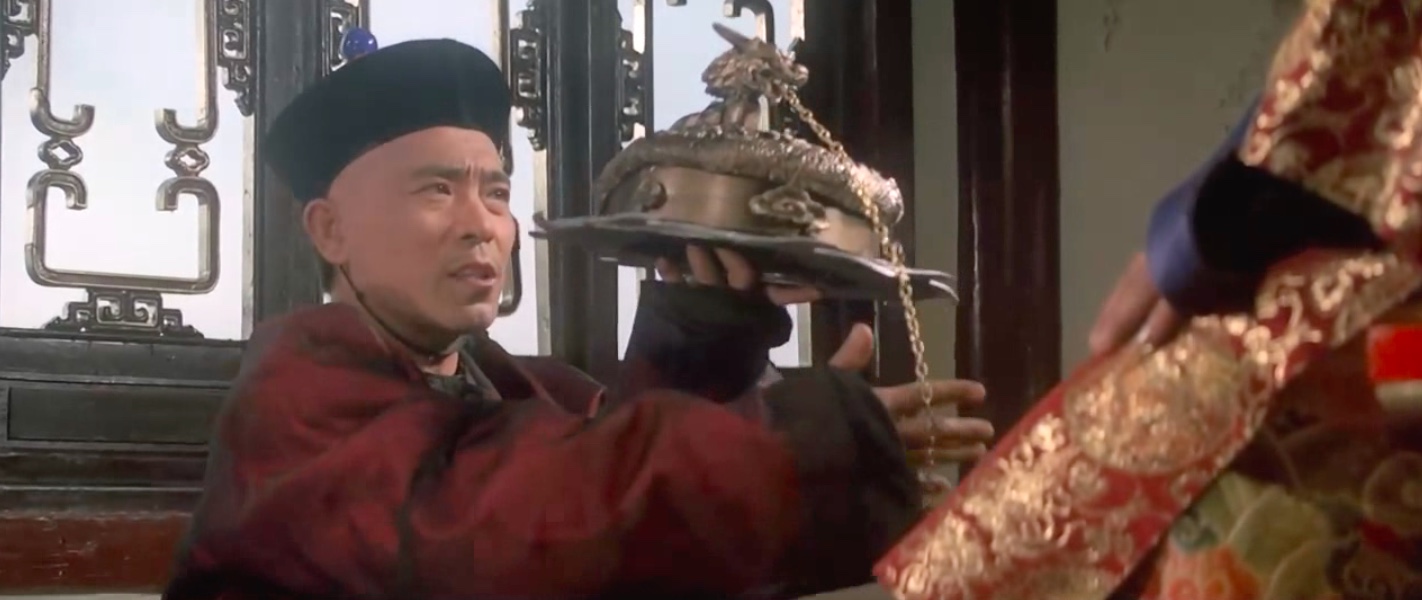
"Blood Drop" stills
The earliest hidden weapons probably originated from the bows and arrows used on ancient battlefields. In order to be more concealed and unexpected, hidden weapons such as sleeve arrows, locust stones, and flying knives were used. In "The Romance of the Gods", the five-color flying stone used by Deng Chanyu is considered to be the earliest hidden weapon.
The blood droplet is a hidden weapon recorded in popular novels in the late Ming and early Qing dynasties. It is said to be a hidden weapon unique to Emperor Yongzheng's secret service organization (an organization that is responsible for doing some shady things for Emperor Yongzheng). It looks like a birdcage and is specially designed to take the heads of enemies from a long distance. The blood droplet uses leather as a bag, with several sharp knives inside, which are controlled by mechanisms. When the person is unprepared, the bag covers his head, turns the mechanism, and the head is immediately taken.
For the ancient times when it was always necessary to set goals first and "come to meet them first", Blood Drops really improved the efficiency of "doing things".
In today’s issue, let’s talk about ancient cold weapons. Let’s briefly summarize them first: cold weapons are divided into stone, bone, clam, bamboo, wood, leather, bronze, steel and other weapons according to their materials; they are divided into offensive weapons and protective equipment according to their uses. , offensive weapons can be divided into three categories: combat, long-range and bodyguard; according to the mode of combat, they are divided into infantry warfare weapons, chariot warfare weapons, cavalry warfare weapons, water warfare weapons and city attack and defense weapons; according to the structure and form, they are divided into short weapons Weapons, long weapons, projectile weapons, tied weapons, body protective equipment, chariots, warships, etc.; ancient Chinese weapons spanned primitive society, slave society, feudal society, and the development of ancient Chinese weapons can be divided into stone weapons, bronze weapons, Four historical stages of iron weapons and ancient firearms. From a broad perspective, the first three stages belong to the cold weapon stage, and then it enters the stage of using both cold weapons and firearms. It was not until after the Opium War that modern Western firearms were introduced to China, and the history of using cold weapons gradually ended.
"Kung Fu Killers"

A good introduction to China's cold weapons is "Weapons of Death" produced by the National Geographic Channel. The opening line states, "You must have kung fu skills to use Chinese weapons. No matter how romantic the names of the weapons are, they are murder weapons."
The narration is concise and to the point, using a scientific attitude, concise language and the final blow of the animation simulation to vaguely express the Westerners' fascination with Chinese Kung Fu.
The film introduces the most common short-range weapons used by the Chinese - knives and swords, and also introduces long-range weapons - bows and crossbows; as well as warrior weapons - Ge and spears are the main basic equipment; the stick among long weapons And guns and so on.
He also told the audience in simple terms why the weapons look like this?
For example, the ideal angle of the sword is a major discovery. According to records in the ancient book "Kaogong Ji", if the angle between the upper and lower blades of the Ge is too large, it will be difficult to hook the enemy. If the angle is too small, it will be difficult to cut off the target. After years of improvement, they Finally, I found that the most ideal angle and the most lethal angle is about 100 degrees.
Professor Yang Hong has spent nearly 50 years studying Chinese archeology. He believes that there was a more ingenious invention in ancient times: weapon makers combined the sickle-like sword with the sharp spearhead to create a terrifying new weapon, the halberd. It has the advantages of both a sword and a spear. It can pierce, stab, hook and chop. It is extremely effective on the battlefield, just like fighting with two weapons. Its flat blade is longer, so the chances of hooking, slicing and slashing the enemy are increased. Infantry would use it to pull down cavalry. The versatile halberd quickly became a favorite weapon among soldiers.
One sentence comment: As the saying goes, all eighteen kinds of martial arts are applicable to all. In fact, from the perspective of historical development and travel in the world, it is not very scientific, except of course, Sun Dasheng and Doraemon.
"Most Lethal Weapons"
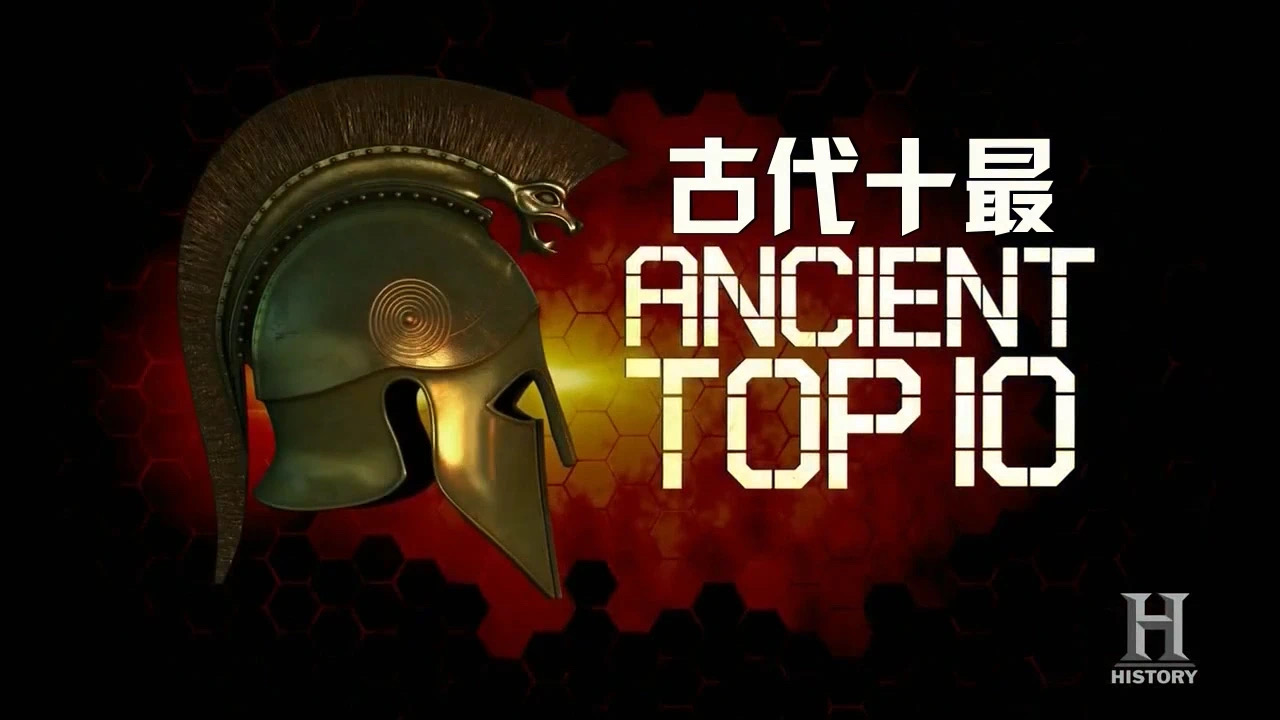
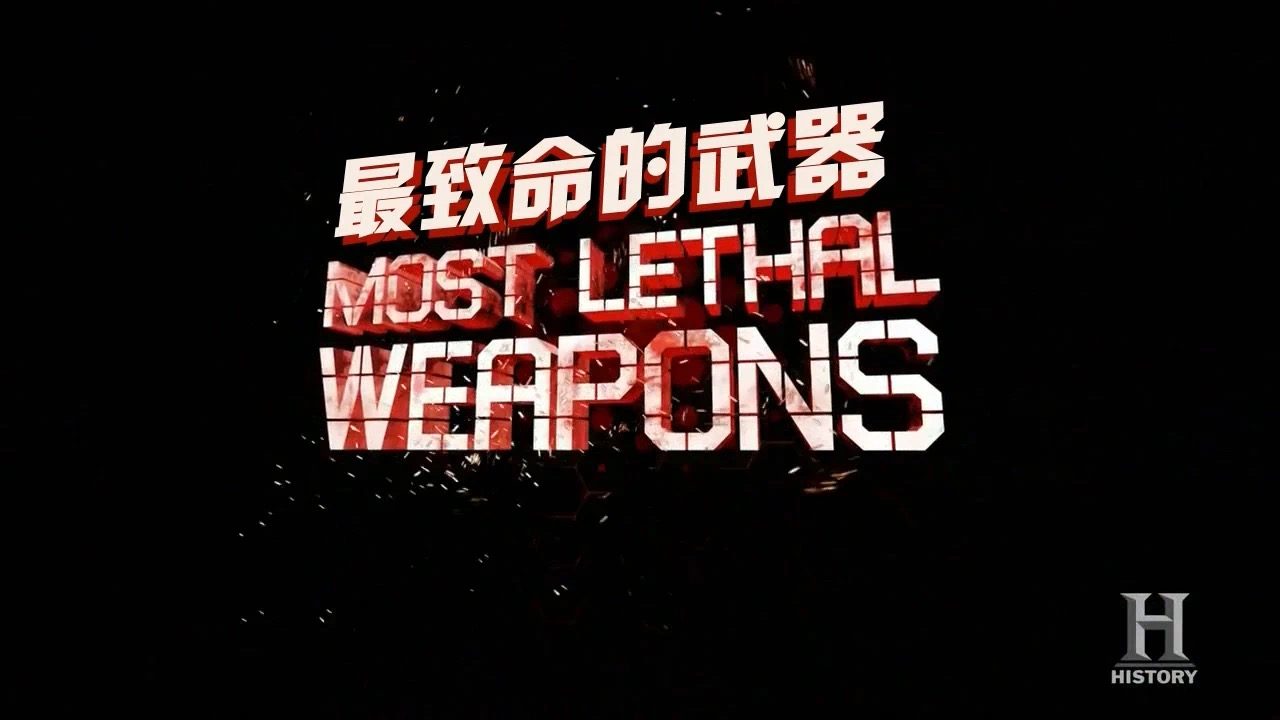
"The Ten Deadliest Weapons of Ancient Times" title sequence
From a global perspective, the world's first ballistic missile launcher, the largest tank in history, a claw that can grab an entire ship, and the most explosive weapon in ancient times, the above weapons will be ranked in the millennium weapon rankings. Where does it rank?
The world's top ten series are somewhat biased, especially when it comes to China's traditional weapons. China itself is shrouded in a veil of mystery when viewed by foreigners, and it is inevitable that there will be exaggerations and errors in historical data, such as comparing the Liannu to an AK47, or using film and television footage from the Song Dynasty to talk about the Qin Dynasty. But this series is still good-looking from the perspective of visual effects. At least it is based on historical events, and the shining points of ancient weapons are also displayed one by one.
10th place: Archimedes Claw
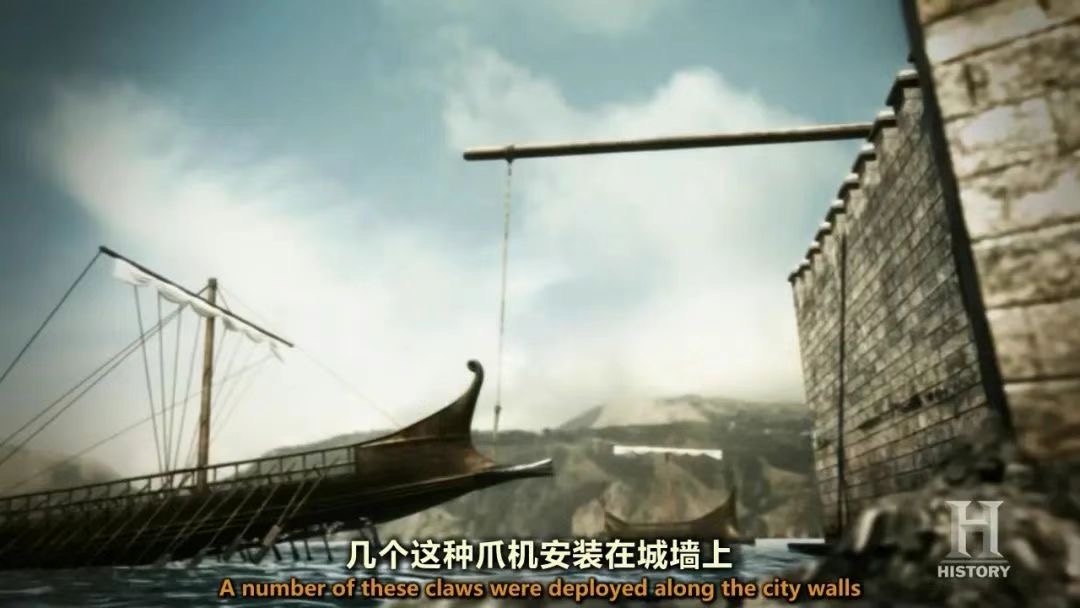
Archimedes not only wanted to pry up the earth, but also invented many war weapons. One of the most famous war weapons was the Archimedes Iron Claw, which could destroy and sink Roman warships, or steal from attacking Roman ships. Push people and weapons into the water.
Mounted on the city walls of Syracuse, Archimedes' Iron Claw was apparently a crane-like arm with a large claw-like grappling hook hanging at the end. The soldiers of Syracuse threw their claws from the top of the city walls onto the attacking ships. Once the claw is dropped, the device's arms swing upward, lifting the boat out of the water and causing it to capsize or sink.
But others believe that inventions like Archimedes' claws may have been used, but their operating principles were misunderstood and their effects exaggerated. Rather than lifting the boat out of the water, it's more useful for throwing boulders onto the boat.
Ninth place: Tribulus terrestris
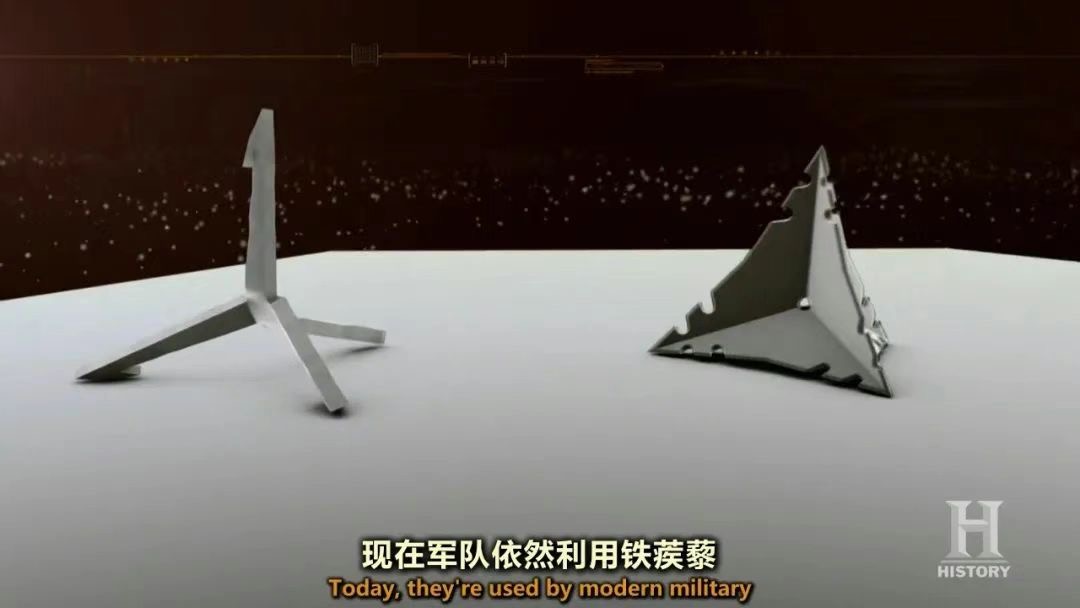
Tribulus is a small weapon. It has four protruding iron thorns, several inches long. Whenever it touches the ground, one thorn points upward. The tips of the thorns are like the herb "Tribulus", hence the name. In ancient wars, caltrops were spread on the ground to delay enemy movements. Today, they are used by modern armies to puncture the tires of enemy vehicles. They are simple and effective. This weapon will never go out of style.
In the 4th century BC, a general of Alexander the Great used caltrops for the first time to stop 70 enemy elephants, causing these behemoths to be unable to move. The elephants behind heard the screams of the elephants in front and panicked. In a confused mess, he turned around and rushed back to his own team, crushing people to death.
No. 8: Siege Tower

The siege tower is a medieval siege weapon, 140 feet (42.672 meters) high, 65 feet (19.812 meters) wide, and weighing 180 tons. The largest tower can hold two to three thousand people, and there are wheels under the tower for travel. During a siege battle, push it close to the city wall, and soldiers can step directly from the platform on the top of the tower to the enemy's wall. Looking at this operation now, it seems a bit silly and has all kinds of pitfalls.
Seventh place: Egyptian chariot

Two people per chariot, a driver and an archer. Moving quickly around the battlefield at speeds up to 30 miles per hour, the entire system can be controlled quickly even over the roughest terrain. The same principles are used in shock, absorption and suspension in modern cars. Thanks to Egyptian chariots, the Egyptian Empire was able to expand and become the most powerful empire of its time.
The importance of Egyptian chariots is evident from the fact that the most famous pharaoh was buried with six well-preserved chariots, two of which were covered in gold and had shock-absorbing suspension systems.
"100 tanks can fly around the battlefield and shoot 1,000 arrows in any direction every minute. That is devastating. This is similar to the rate of fire of artillery on modern helicopters." Experts in the film said.
Sixth place: Greek Fire
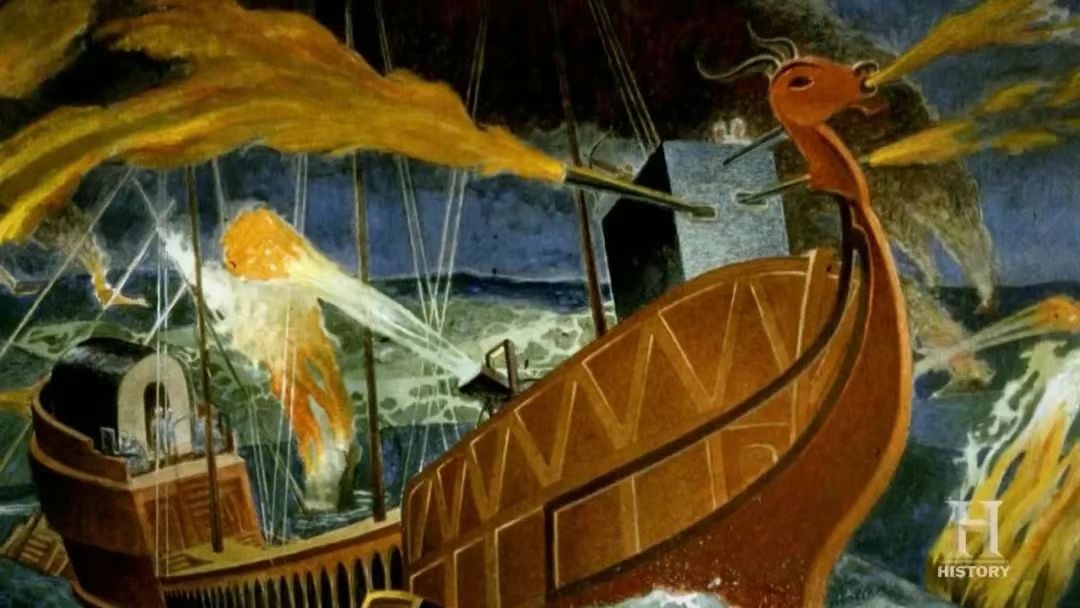
Imagine a sea battle.
The enemy is breathing fire. This thing burns on top of the water, burns under the water, and then sticks to you... it's hell.
This was the secret weapon of Constantinople, and somehow they were able to project fire onto enemy ships, creating infernos that could not be extinguished. Unlike modern classified military information, Greek fire remained mysterious, with personnel at various stages of its creation only privy to the secrets of their portions of the process. Fighting Greek fire is extremely difficult and cannot be put out with water, only strong vinegar, overnight urine and sand. Many scientists have tried to recreate the Greek fire, but all have failed.
Fifth place: Chinese Liannu
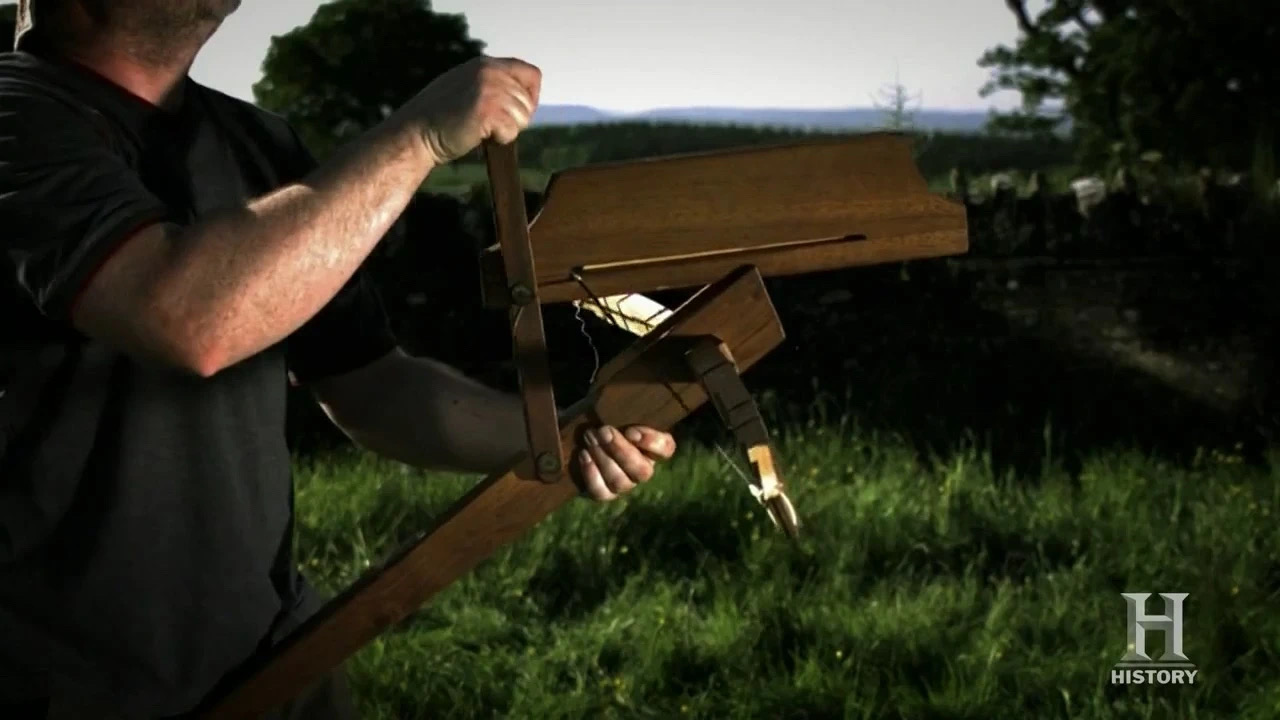
More than 2,000 years ago, the Chinese invented a weapon that could turn untrained soldiers into deadly killers. It was the first handheld rapid-fire weapon.
"Shi Ming·Shi Bing" records: Crossbow, anger, and holding anger. Its handle is called an arm, which looks like a human arm. The person who hooks the string is called a tooth, which looks like a tooth. The outside of the tooth is called Guo, which is the rule of the tooth. It is called the county knife, and its shape is the same. Hankuo's mouth is called Ji, which is like the cleverness of Ji, and it is also like the opening and closing of a door with regularity. It can be said that it is a bow with an arm, which is mainly composed of a crossbow arm, a crossbow, a bow string and a crossbow machine. Its weakness is probably that the loading time is longer than that of a bow.
Zhuge's Liannu could fire ten arrows at a time and was very powerful. Later, Ma Jun, a great inventor in the late Han and Wei Dynasties, wanted to improve it and make it a fifty-arrow repeating crossbow with greater power.
If you equip 1,000 Chinese soldiers with this kind of repeating crossbow, which can fire one crossbow bolt every second, then 60,000 crossbow bolts will be shot at your enemy in one minute, 60,000 crossbow bolts in one minute. Yet this simple design only has four parts.
Fourth place: catapult

Most people think of it as a medieval weapon, but in fact, it originated in ancient China. This thing pushed the boundaries of ancient engineering and created a revolution in ballistics, a flexible, portable killing machine.
The ancient Chinese not only used boulders as missiles to strike at their enemies, but also used to ignite the projectiles before throwing them at the enemy. Centuries later, the Mongols naturally took this stage a step further. Catapults are not just for throwing rocks and stones. They were also used to throw plague- and disease-ridden corpses over city walls.
Third place: Roman ballistae

The Roman ballista was a deadly wooden crossbow usually mounted on a stand. It was the forerunner of modern ballistic missiles. The bullets are fired with incredible speed and accuracy, reaching speeds of up to 100 miles per hour (160.9344 kilometers). At that speed, an enemy soldier can be nailed directly to a tree with a single bolt.
The ropes that pulled the mechanism were often made from hemp or even human hair, but most were made from animal sinew. The Romans called these ropes "sufferers," like tortured souls, because when you turned them, that howl was so horrific!
Second place: compound bow
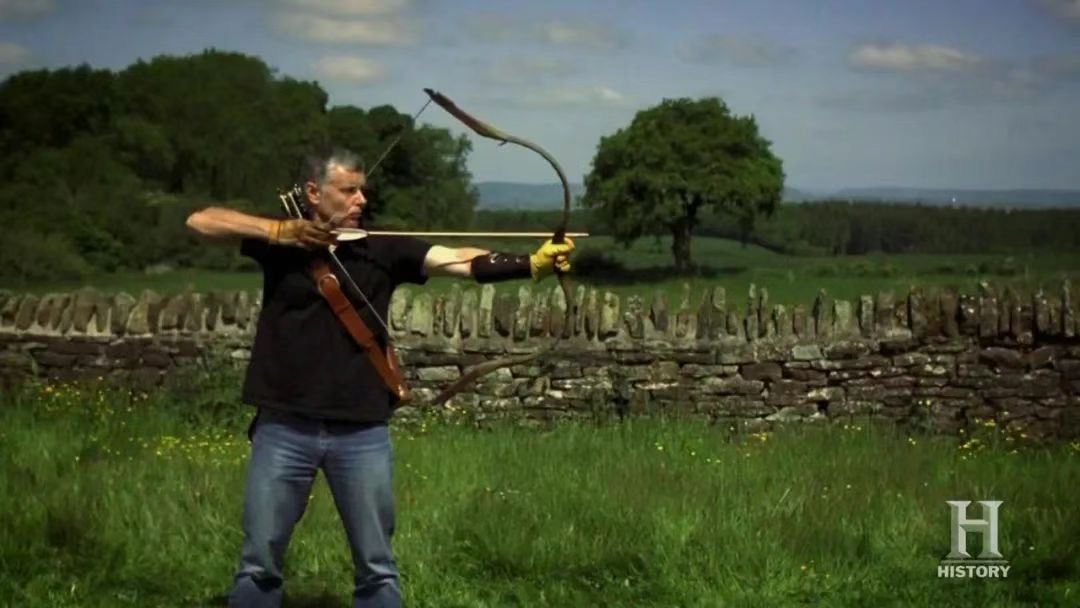
The compound bow was the favorite weapon of ancient Egyptian archers. Launched at 300 feet (91.44 meters) per second.
"Black Tartar Story": "There is a sheep's horn bow, and the horn surface is connected to the target three feet long." During the Mongolian Khanate period, bows were specially made by hand craftsmen, and the bow-making technology was improved. The bow system was made of rubber bands with good toughness. The tighter the bow string is stretched, the greater the bow shape of the bow arm changes, and the greater the energy stored. When the string is loosened suddenly, the stored energy is suddenly released, and the arrow caught on the bow string is shot out.
The shooting range of Mongolian bows and arrows is far greater than that of Huns' bows and arrows. When Mongolian bows and arrows are fired with "light arrowheads" that are "small but sharp", the maximum range can reach two to three hundred yards, which is at least twice as long as that of Huns' bows and arrows. Mongolian cavalry archers also have "heavy arrows" specially used to break armor. This "big and wide" arrow can "break skin and penetrate shoulders" and can penetrate the armor of soldiers of the Jin Dynasty and Southern Song Dynasty. There is another improvement in Mongolian bows and arrows, that is, they are not afraid of wind and snow. The Mongols invented the "moistening sheep's blood" technology, and used a special alkaline earth solution on the bow surface for carbonization and waterproofing. In the famous Battle of Sanfeng Mountain, the Mongolian cavalry relied on this technology to severely damage the Jin Dynasty in the wind and snow. Army.
First place: Gunpowder
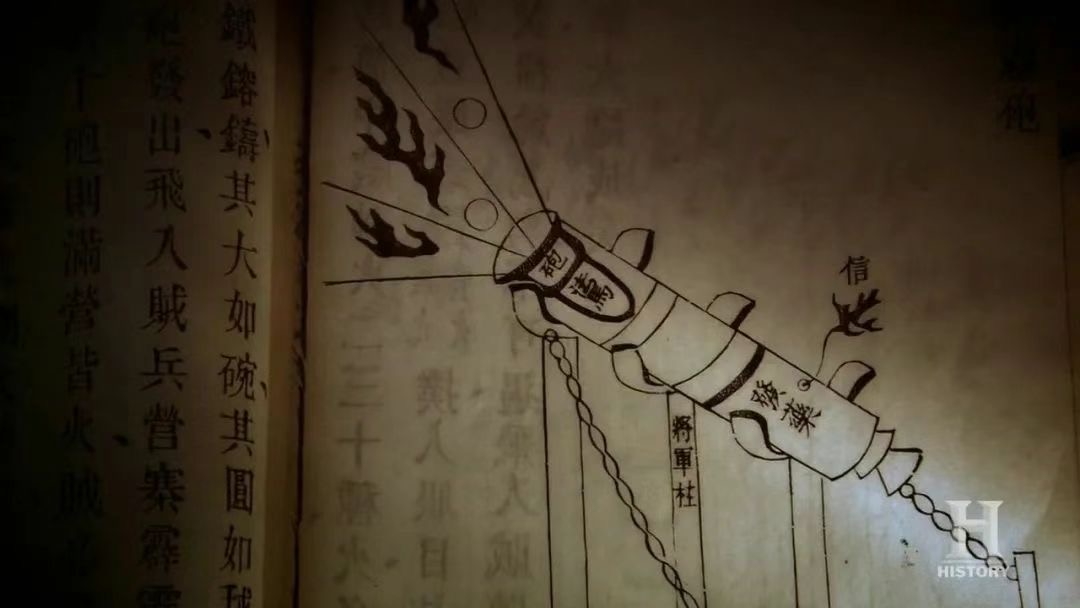
One of the earliest uses of gunpowder was not to create world-conquering weapons. It is used by the Chinese for entertainment in the form of fireworks. But eventually fireworks did inspire the world's first gunpowder weapons. It also changed ancient warfare. It didn't just redefine war.
One sentence review: Whether it is team combat or individual combat, the technical work of ancient war weapons is really complicated!
"The Legend of Ancient Chinese Weapons"

This documentary is a ten-episode special series of the National Defense and Military Channel's "Aspects of Weapons", and it is quite well shot.
Its production team is Central New Film Discovery Documentary Media. Since its establishment, it has not only inherited Beijing Keying's 60-year scientific documentary creation tradition, but also actively explored the innovative development path of scientific documentaries in the new era. In recent years, it has successively launched "Two Hundred Years of Surgery", "Ascend the Peak" and "Mendeleev's Life". Busy", "Legend of the Master", "Rice Road" and many other phenomenal science documentaries.
The whole film takes characters and stories as the core, and unfolds a relevant war or story based on the audience's interests and concerns. On the one hand, it shows the professionalism and technology of various weapons from a more in-depth perspective; on the other hand, based on the principle of combining scientific evidence and easy-to-understand, it unfolds the development process and key nodes of typical weapons in the cold weapon era in simple and easy-to-understand terms. or interests.
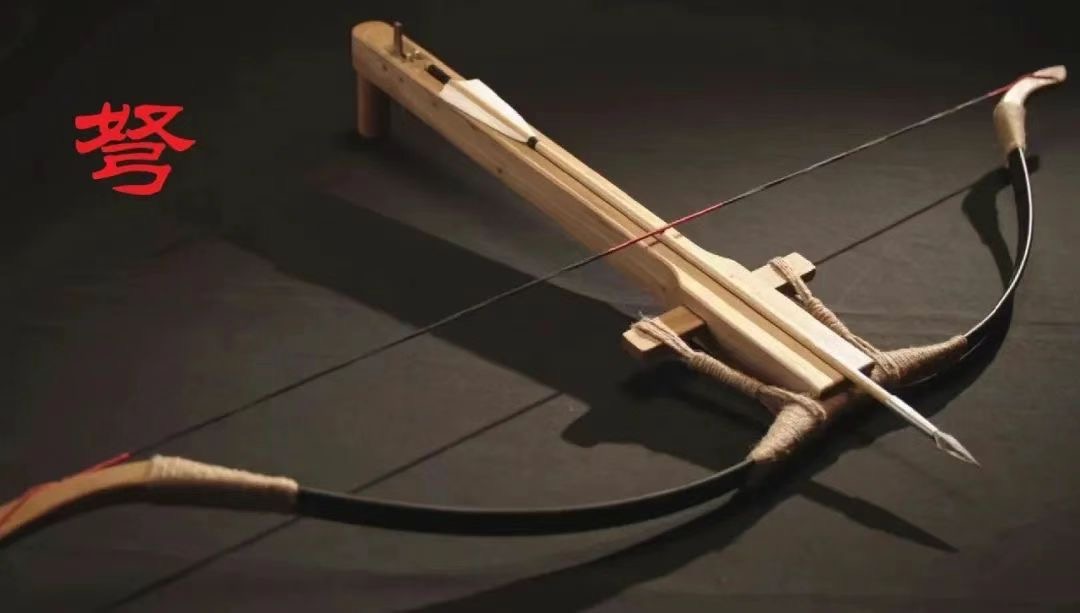


Each episode focuses on a representative weapon, including halberds, broadswords, sabers, swords, bows, crossbows, vests, horseshoes, cannons, and bones. It is based on a studio account of a classic combat example of this weapon, combined with the essence of cold weapons. We use location shooting, origin, restoration or testing to show the knowledge, interest and operability of weapons, and try our best to restore the combat power and characteristics of each cold weapon with exciting stories, detailed analysis and actual combat display.
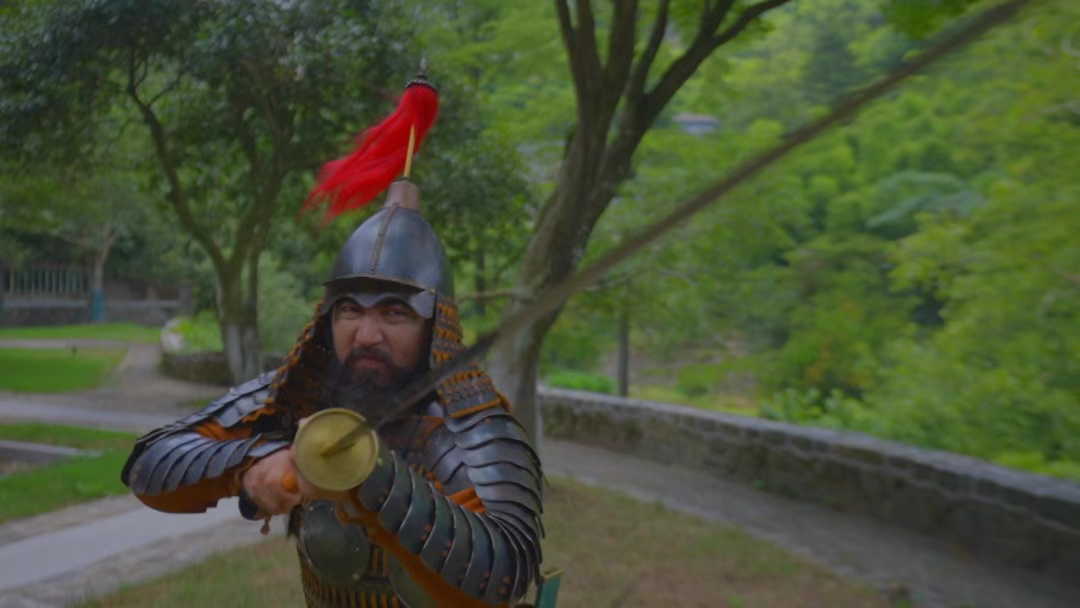
The filming of the film lasted two years, hiring dozens of cold weapon experts and scholars to interpret and analyze it, and inviting many well-known martial arts athletes to appear in real scenes. It gives a relatively comprehensive and practical account of the invention, production, usage, actual power and development and evolution of several cold weapons. Each episode uses a classic historical battle example as the starting point to tell a story related to an ancient weapon. The most distinctive thing is that in addition to showing the professionalism and technology of ancient weapons, the film also verifies the practicality of cold weapons in simple and easy-to-understand terms based on the principle of combining scientific evidence and easy-to-understand.
For example, the combat power and lethality of each weapon are analyzed. The film has cold weapon experts and the film crew working together to restore and verify its true effectiveness.
One sentence review: Experimental documentaries can deepen the understanding of "seeing is believing".
"Heart on the Blade"
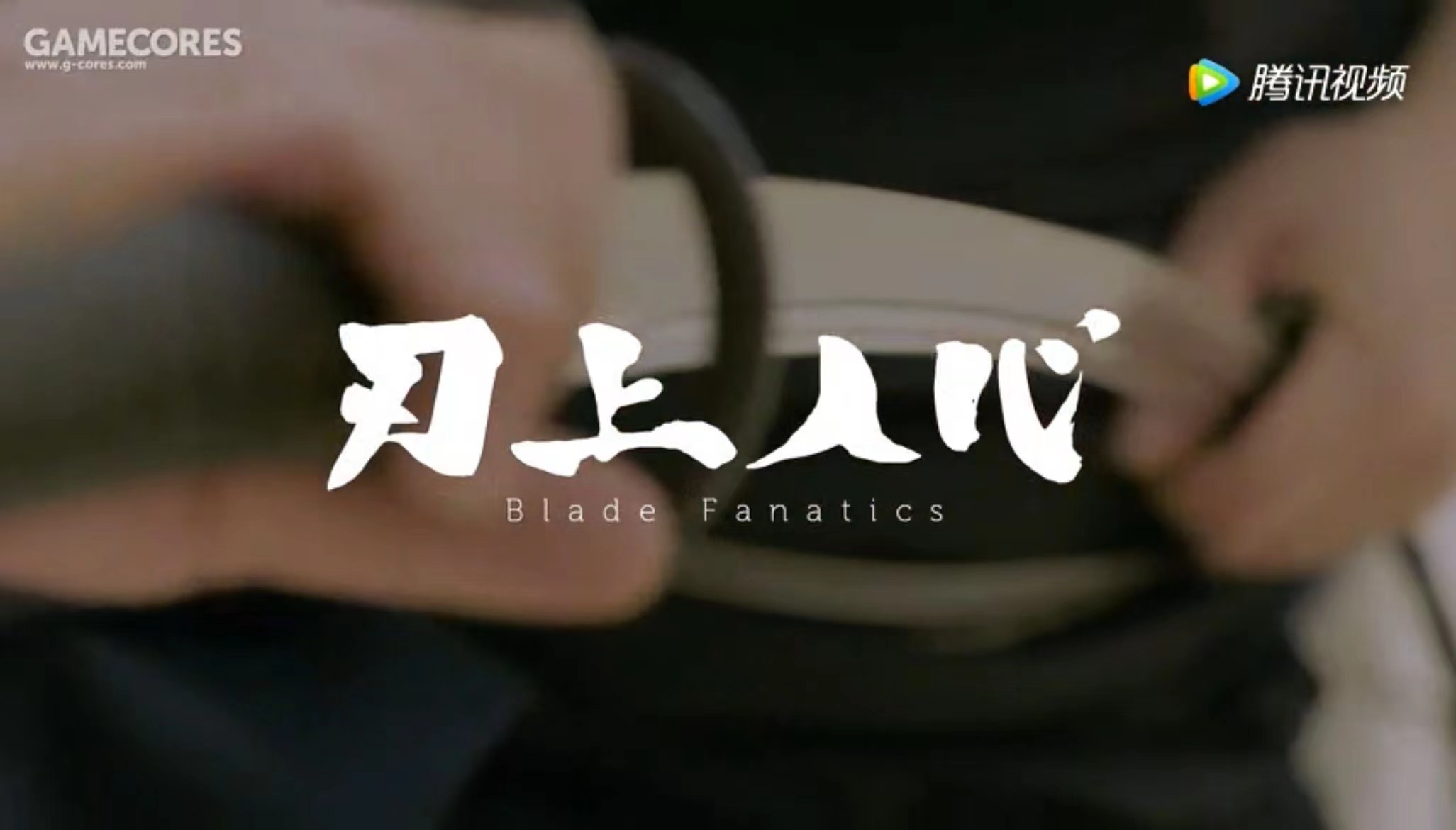
This 21-minute short film is very down-to-earth and worth watching. The creative team interviewed like-minded people who are still obsessed with fighting cold weapons in modern society, including armor craftsmen, game developers, and art of war instructors, to see how they implement their obsession with cold weapons in different ways. Whether they are making armor, learning martial arts, or choosing a different path, they all give their weapons a new meaning in their own way—a meaning beyond killing.
The Huben Knights is a cold weapon safety reenactment organization founded in 2011 by European armor and weapon enthusiasts. Through actual combat drills, armor discussions, and cold weapon warfare skills, the organization comprehensively allows members to understand ancient cold weapon warfare, dispel many false information popular on the Internet, and cultivate a correct, healthy and beneficial hobby that can exercise the body and mind. There are national martial arts competitions every year, and they also participate in the world-wide All-A competition held in Barcelona, Spain.
Members of the Huben Knights said in interviews that the core of each set of armor is its helmet. He believes that on any battlefield, if you only choose one piece of armor, you should choose the helmet first. Of course, he also complained about the American TV series "Game of Thrones".
"I see many people not wearing helmets when fighting. In fact, this is a very incorrect approach. Although it is very romantic, it is not safe!" The members have recently been trying to copy some Song Dynasty armors.
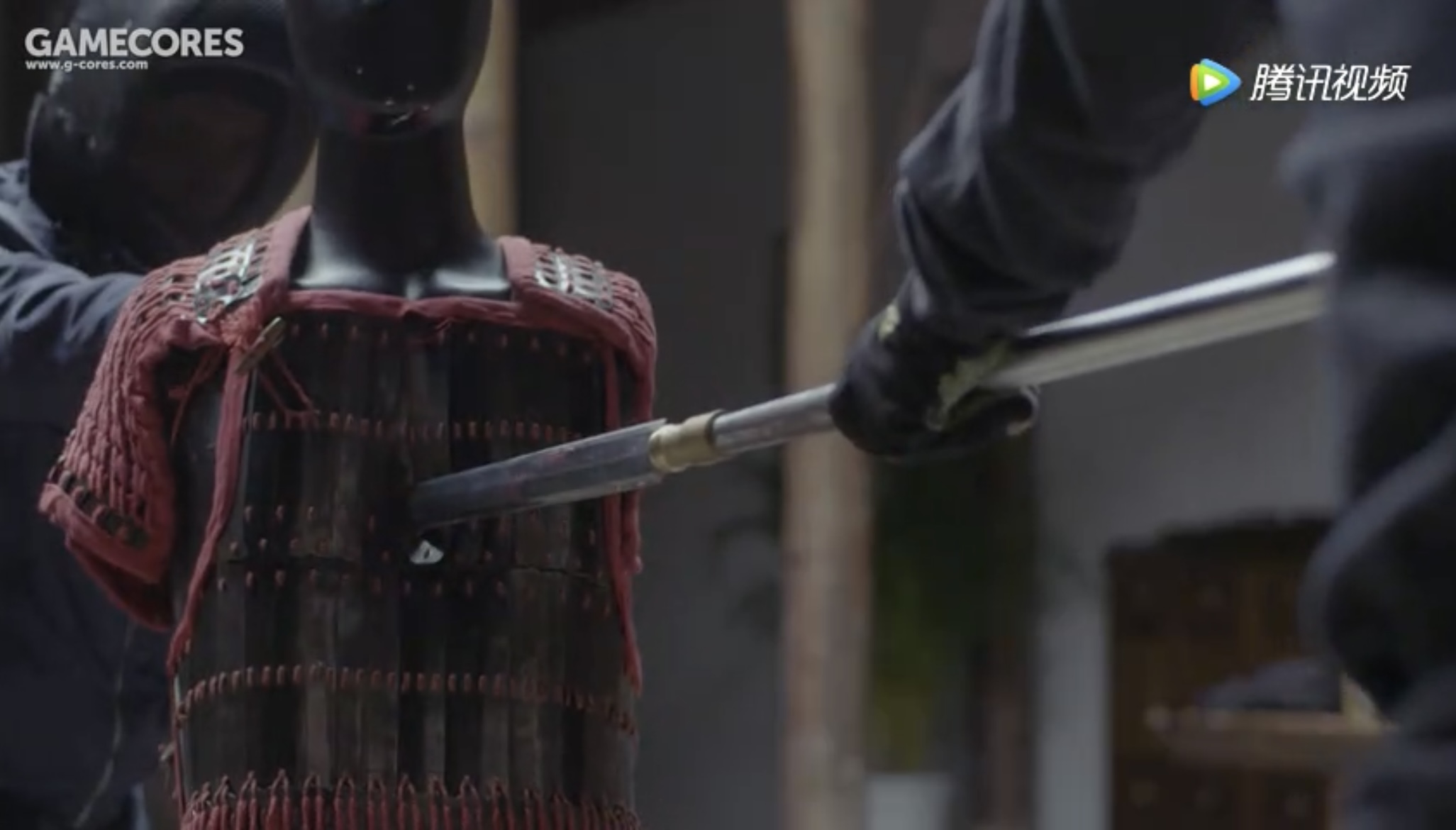
In the film, they also found a way to restore a set of cloth armor themselves.
The way cloth armor is made is a bit like the soles of shoes, the cloth is packed very densely.
In the experimental duel between cloth armor and iron armor, the spear pierced the iron armor, but the cloth armor was very strong. If the knife was used to cut, the cloth armor was defeated.
Aggregation technique is a defensive technique used by ancient Japanese samurai when they are suddenly besieged or assassinated by others.
The film also interviews a Chinese teacher who has practiced Polymerization for many years. Regarding the heart of the sword, the teacher summarized: "Polymerization can cultivate people's awe of swords. I think it is quite scary that people nowadays are not afraid of anything. ...People should cherish everything, the people around them and their feelings. I am very careful in all my movements when putting away the knife. Although this knife is fake and not very expensive, as a prop for practice, it is like a partner. , I should treat it carefully."
The reason why fans love cold weapon fighting is that they can understand the cold weapons and experience the battlefield feeling of ancient warriors from the depths of their souls. Regardless of fighting and combat, martial arts and kendo, the first thing is to be calm and calm. The so-called swordsmanship follows the heart, and the sword and man become one.


